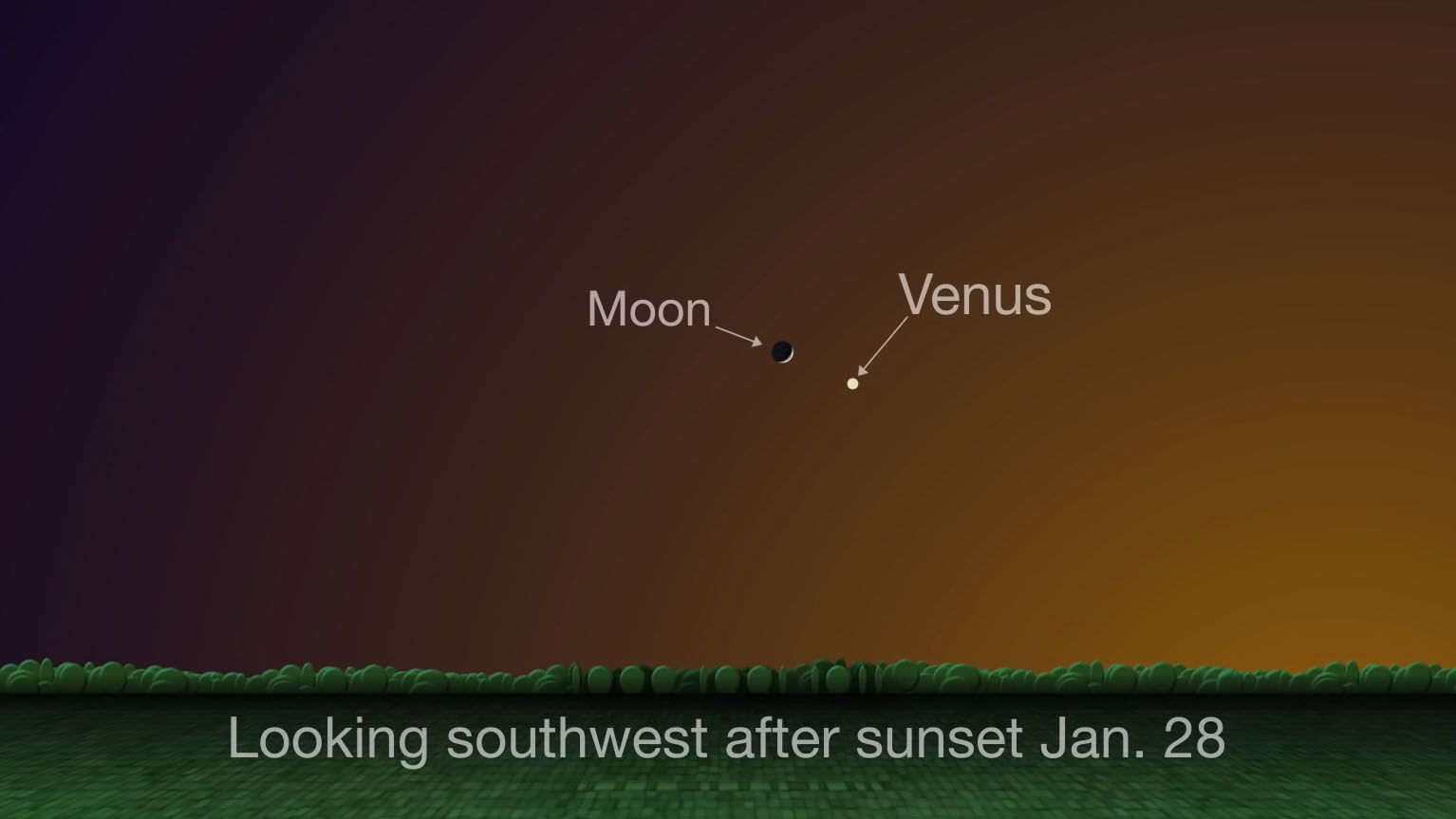The 'evening star' Venus swings by the crescent moon today. Here's how to see it.

Tonight (Jan. 28), you can catch the crescent moon make a close approach to Venus in the evening sky.
The waxing moon was in conjunction with Venus — meaning that the pair shared the same celestial longitude — at 2:29 a.m. EST (0729 GMT). Though the pair were below the horizon for skywatchers in the U.S. at the time, they will still appear close together after sunset.
In New York City, for example, Venus will set at 8:25 p.m. local time, or 3 hours and 17 minutes after sunset, according to timeanddate.com. The moon sets just a few minutes later, at 8:51 p.m. local time.
Related: The brightest visible planets in January's night sky
The four-day-old moon, which reached new phase on Friday (Jan. 24), will pass just over 4 degrees to the south of Venus, according to the skywatching site In-The-Sky.org. Look for the pair as the dusk fades, when they will be about 30 degrees above the southwest horizon in the constellation Aquarius. (For reference, your clenched fist held at arm's length measures about 10 degrees wide.)
Venus will be shining at magnitude -4.1, or brighter than even the brightest stars in Earth's night sky. The "evening star" will be at its greatest brightness in April, when it will be at magnitude -4.5.
Editor's Note: If you snap an amazing night sky picture and would like to share it with Space.com's readers, send your photos, comments, and your name and location to spacephotos@space.com.
Get the Space.com Newsletter
Breaking space news, the latest updates on rocket launches, skywatching events and more!
- The 10 must-see skywatching events to look for in 2020
- When, where and how to see the planets in the 2020 night sky
- Space calendar 2020: Rocket launches, sky events, missions & more!
Email Hanneke Weitering at hweitering@space.com or follow her @hannekescience. Follow us on Twitter @Spacedotcom and on Facebook.

Join our Space Forums to keep talking space on the latest missions, night sky and more! And if you have a news tip, correction or comment, let us know at: community@space.com.

Hanneke Weitering is a multimedia journalist in the Pacific Northwest reporting on the future of aviation at FutureFlight.aero and Aviation International News and was previously the Editor for Spaceflight and Astronomy news here at Space.com. As an editor with over 10 years of experience in science journalism she has previously written for Scholastic Classroom Magazines, MedPage Today and The Joint Institute for Computational Sciences at Oak Ridge National Laboratory. After studying physics at the University of Tennessee in her hometown of Knoxville, she earned her graduate degree in Science, Health and Environmental Reporting (SHERP) from New York University. Hanneke joined the Space.com team in 2016 as a staff writer and producer, covering topics including spaceflight and astronomy. She currently lives in Seattle, home of the Space Needle, with her cat and two snakes. In her spare time, Hanneke enjoys exploring the Rocky Mountains, basking in nature and looking for dark skies to gaze at the cosmos.









